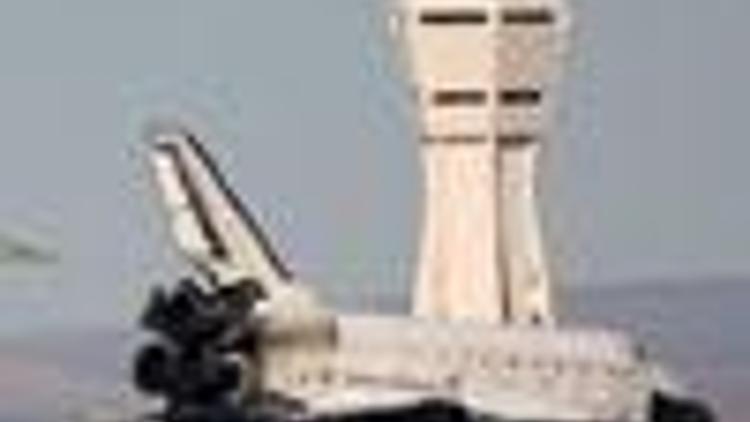U.S. Space shuttle Endeavour back to Earth safely
Güncelleme Tarihi:

The U.S. space shuttle Endeavour and its seven astronauts returned safely to Earth on Sunday at a California air base concluding a 16-day mission to double living capacity at the International Space Station.
The space shuttle landed Sunday in sunny California, after being diverted there by stormy weather at NASA’s Florida spaceport. Commander Christopher Ferguson guided Endeavour down at 4:25 p.m. EST.
The safe landing at Edwards Air Force Base ended a trip that spanned 16 days and left the international space station freshly remodeled and capable of housing bigger crews.
The shuttle program’s 124th mission remodeled the space station, doubled its crew capacity to six and repaired a rotating joint on a solar wing.
"Welcome back, that was a great way to finish a fantastic flight, Fergie," Alan Poindexter, an official at NASA control center in Houston, Texas, told shuttle commander Chris Ferguson moments after Endeavour rolled to a stop at Edwards Air Force Base in the Mojave Desert northwest of Los Angeles.
"We are happy to be here in California," Ferguson was quoted by AFP as replying.
Poindexter had earlier told the crew that forecasts for conditions at Cape Canaveral were not expected to improve significantly over the next day, prompting the change of landing venue.
Endeavour needed to land by Tuesday, by which point it would have nearly exhausted its supplies of oxygen and water as well as its hydrogen batteries, which supply electricity.
During a brief address on the tarmac Ferguson said of the detour to sunny California: "It all worked out in the end very well."
During the shuttles 63-minute dive towards the California desert, approaching from the Pacific Ocean, temperatures soared to nearly 1,500 degrees Celsius on Endeavour’s thermal tile-protected wings, nose and belly as it raced through the denser layers of the atmosphere from about 130 kilometers (81 miles) above Earth.
Two of the shuttles small motors were turned on for just under three minutes at 2019 GMT in order to slow Endeavour down to 328 kilometers (204 miles) per hour from its previous speed of 28,000 kilometers (17,000 miles) per hour as it orbited the Earth.
The arrival of the shuttle was heralded by twin sonic booms, while shortly after touchdown Endeavour deployed a red and white drag chute to slow the craft to a halt, live images from NASA Television showed.
Endeavour spent 12 days docked at the International Space Station (ISS) where its crew delivered 14.5 tons of equipment on a mission billed as an "extreme home improvement" to double the stations crew capacity from three to six.
Endeavour spent 16 days in orbit on a journey totaling 10.6 million kilometers (6.6 million miles).
During their mission, Endeavour astronauts took four space walks to successfully repair a jammed joint on one of three rotating solar panels that harvest energy for the orbiting station.
The mission was not without its glitches, however. Astronaut Heidemarie Stefanyshyn-Piper let a 100,000-dollar toolbag slip from her grasp and into the void on the first space walk. And technical problems with a new piece of equipment that recycles waste water caused NASA to extend the mission by a day.
The 250-million-dollar device was an essential part of the shuttle mission to double the stations accommodation capacity.
Crew members ran three successful cycles on the unit, designed to process urine, perspiration and bath water into drinkable water.
Once up and running, the unit will be able to recycle the stations 6.8 tons of waste water produced each year, eliminating the need to regularly ferry vast quantities of water to the space station.
Samples of the drinking water produced by the machine were brought back to Earth for analysis.
The Endeavour mission is the last by a U.S. space shuttle in 2008. The next flight is scheduled for February, with another mission to continue building the space station.
The ISS should be completed in 2010, also the target date for the retirement of the US fleet of three space shuttles.
Photo: AFP

